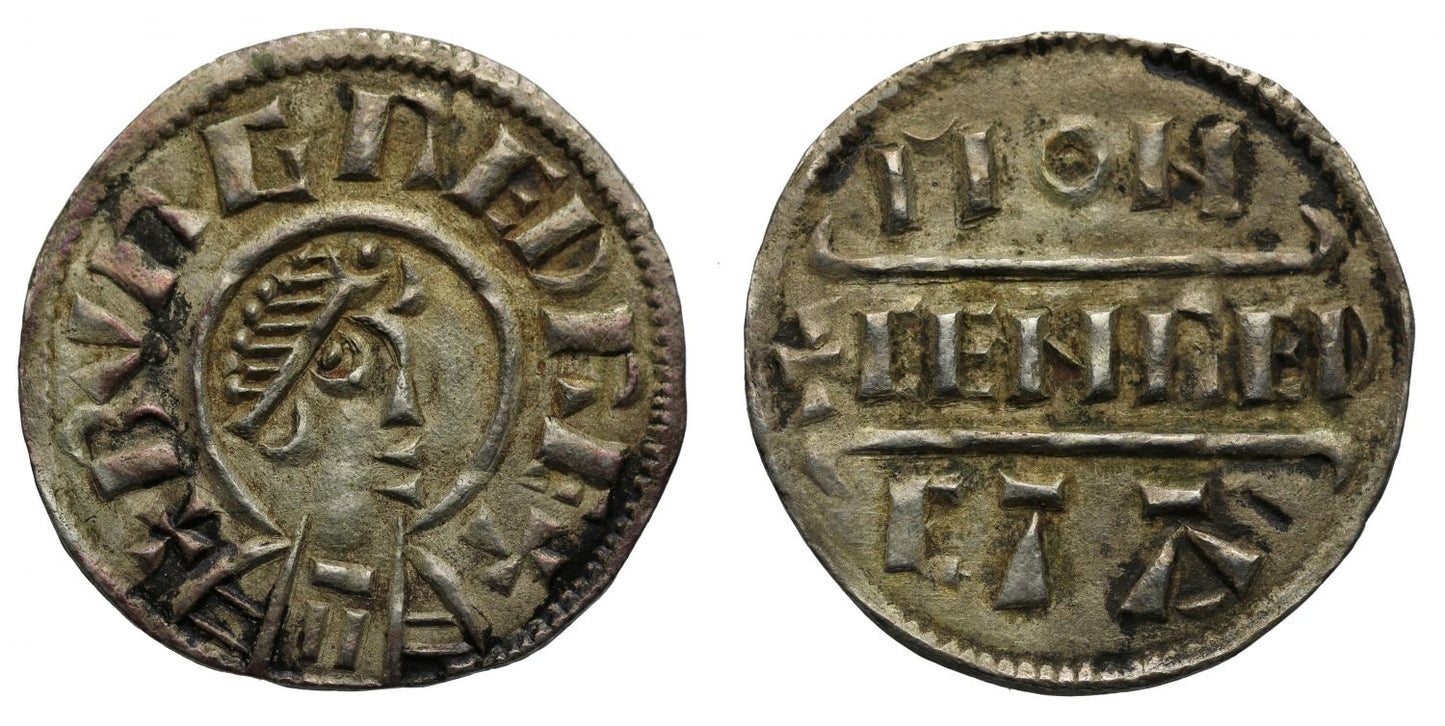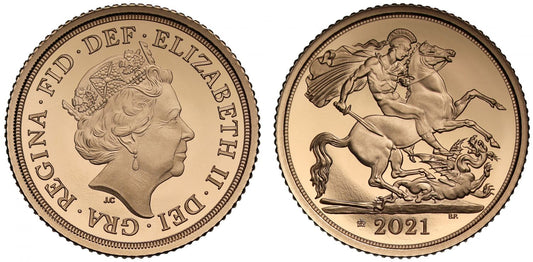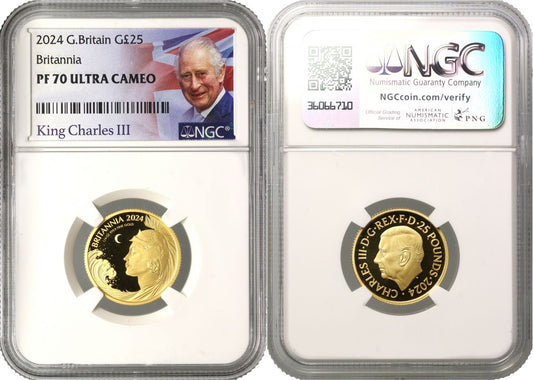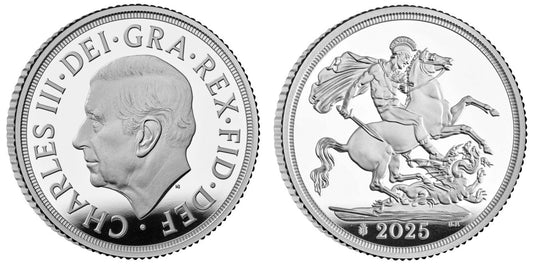FAQs
What makes a coin valuable?
I have coins to sell, what’s the next step?
How will my purchases be shipped?
What happens if I’m not entirely happy with my purchase?
Burgred, King of Mercia, Penny, phase III, Cenred, reverse D, Mackay H11
Burgred, King of Mercia (852-874), silver Penny, Phase III (868-874), Moneyer Cenred, diademed bust right to bottom of coin, linear inner circle and legend around, toothed border around rim both sides, legend commences lower left, BVRGRED REX, rev. type D, three-line inscription with linear crooked division lines, no lunettes, reading across middle first followed by top and bottom, +CENRED / MON / ETA, weight 1.17g (BMC type d, 183; Mackay H11.15 O6/R6 this coin; cf. SCBI 20:630 Mack; cf. SCBI 48:704 Rotunda; N.426; S.942B). Toned with some uneven black deposit, good very fine.
Turning to the "The Coinage of Burgred of Mercia 852-874" in the British Numismatic Journal volume 85 of 2015, William Mackay in this monumental corpus shows only 23% of the total sample has a type D reverse, equating to 196 coins out of 847 Burgred pennies sampled. The exact variety is phase III, obverse type H11 pellet eye with crescent below, late horizontal C, moneyer Cenred H11.15 O6/R6, obverse I1 with bars and reverse D. This coin is one of only nine coins classified as H11 of Cenred and he in turn is one of 26 moneyers working in this type, of which 149 coins in total are H11.
Burgred was probably a senior Ealdorman when he succeeded to the Kingship of Mercia from Beorhtwulf in 852. Preferring alliances rather than hostility he first married Ethelswith daughter of Aethelwulf of Wessex at Easter 853, possibly surrendering Berkshire in return. The two Kings allied against Powys in 853 causing King Cyngen ap Cadell to flee to Rome. His nephew Rhodri Mawr took over what was left but Burgred continued against Gwynedd and advanced as far as Anglesey along the northern coast but had to turn back after the Vikings landed a great army in England that Autumn.
The large Viking force wintered in East Anglia then marched across Mercia to attack Northumbria in 866, but Burgred did not make a move and perhaps missed an opportunity to unite with the Northumbrians against the Vikings. By the Autumn of 867 the Vikings had moved south to Nottingham whereupon Burgred called for aid from Wessex, and King Aethelred and his brother Alfred joined the cause, both taking Mercian wives as an alliance. However, the Vikings stayed within the city walls of Nottingham happily living off supplies brought in by their boats up the River Trent, whilst the English camped outside living off the land, whilst a long stand-off progressed due to Burgred's caution. Eventually the Vikings agreed to go by 869 presumably in exchange for money and further supplies and left for either York or East Anglia, the latter in which they settled in 870. Burgred did not aid Wessex in 871 as the Vikings continued their marauding and had to come to terms that Winter with the Vikings when they threatened London. The Vikings moved on to Torksey in 872 and then the Midlands wintering in 873 at Repton. Then in 874 the invaders moved to formally take over Mercia, and Burgred fled into exile with his wife and journeyed to Rome where he later died at an unknown date.
The obverse legend translates as "Burgred King" and the reverse with moneyer name "Cenred Moneyer"
Provenance:
Ex Adrian Lyons, sold at Spink Coin Auction 219, 24th September 2013, lot 80.
Ex Collection of an English Doctor, part one, Sovereign Rarities, London, March 2022.
FAQs
What makes a coin valuable?
I have coins to sell, what’s the next step?
How will my purchases be shipped?
What happens if I’m not entirely happy with my purchase?













